How To: Sit-Up
3 Golden Rules (BUILD ABS FAST!)
Today I’m going to help you clean up your form on Sit-Ups so you no longer have ANY EXCUSE to not train your abs at home!
When it comes to performing the perfect sit-up, there are three golden rules you should always keep in mind.
Golden Rule #1 – Sit-Ups Are Not A Speed Contest
Listen, the sit-up is one of the few exercises that I recommend as a “pure” isolation movement and what I mean is that the goal here isn’t “progression”, per say.
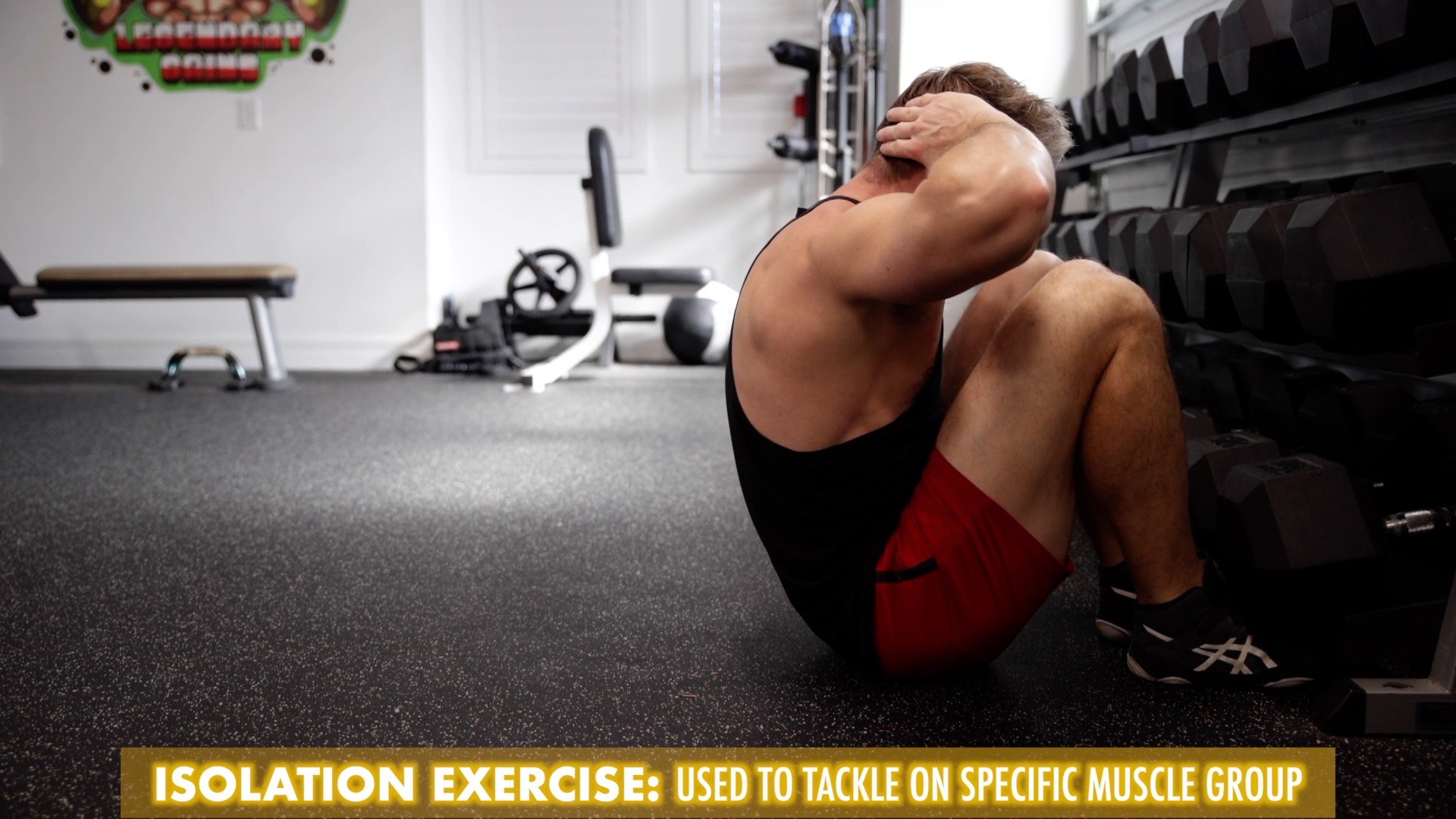
It’s more about feeling the entire rectus abdominis stretch and contract on every repetition while simultaneously keeping as much engagement OUT of your hip flexors as possible.
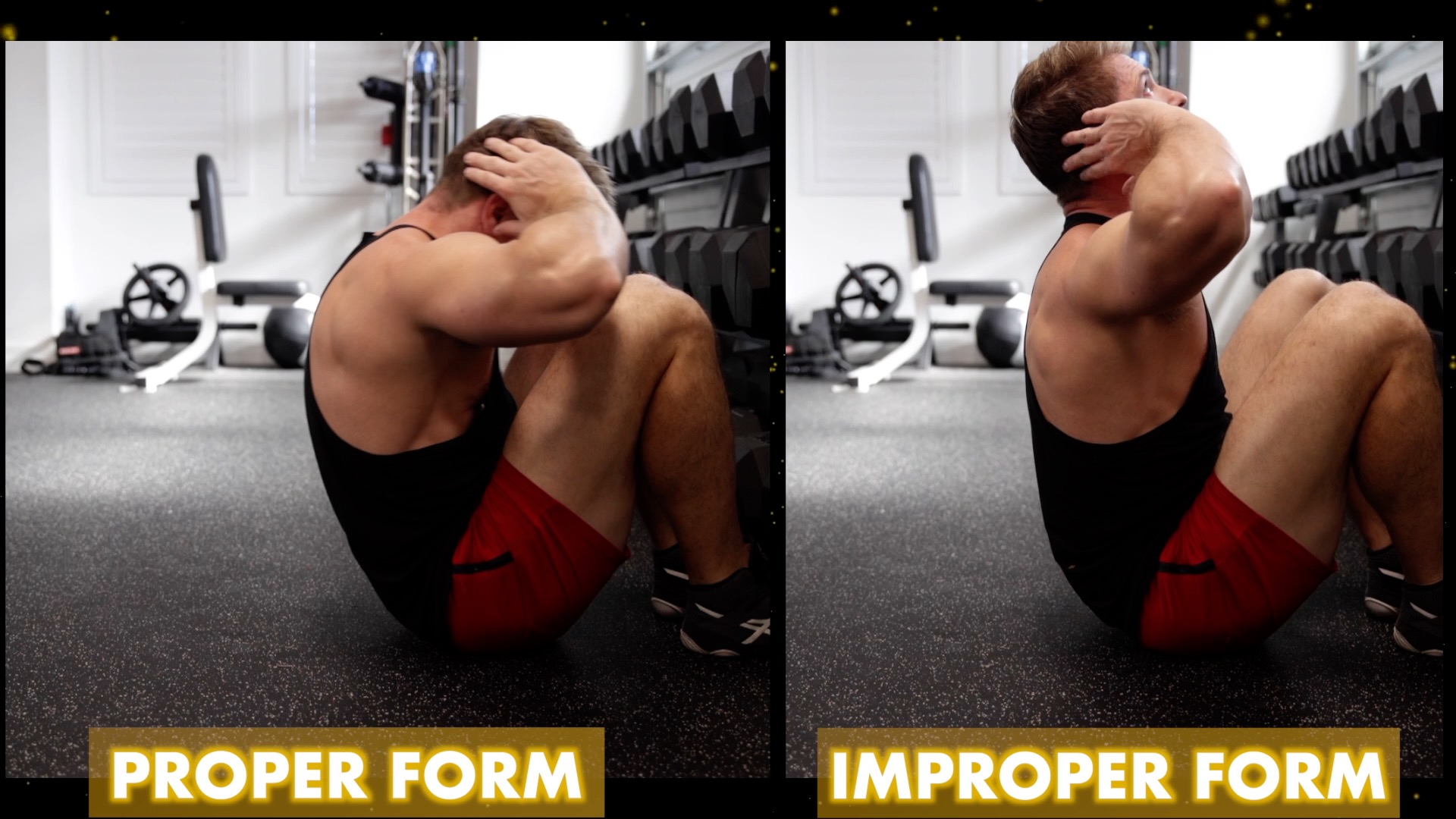
This is because the Rectus Abdominis’ main function is to flex the lower and mid spine and the best way to get started is to anchor your feet. Locking your feet in place will help you keep the focus of the exercise on flexing your spine and allow you to boost the intensity of your sit-up by bringing your glutes closer to your feet.
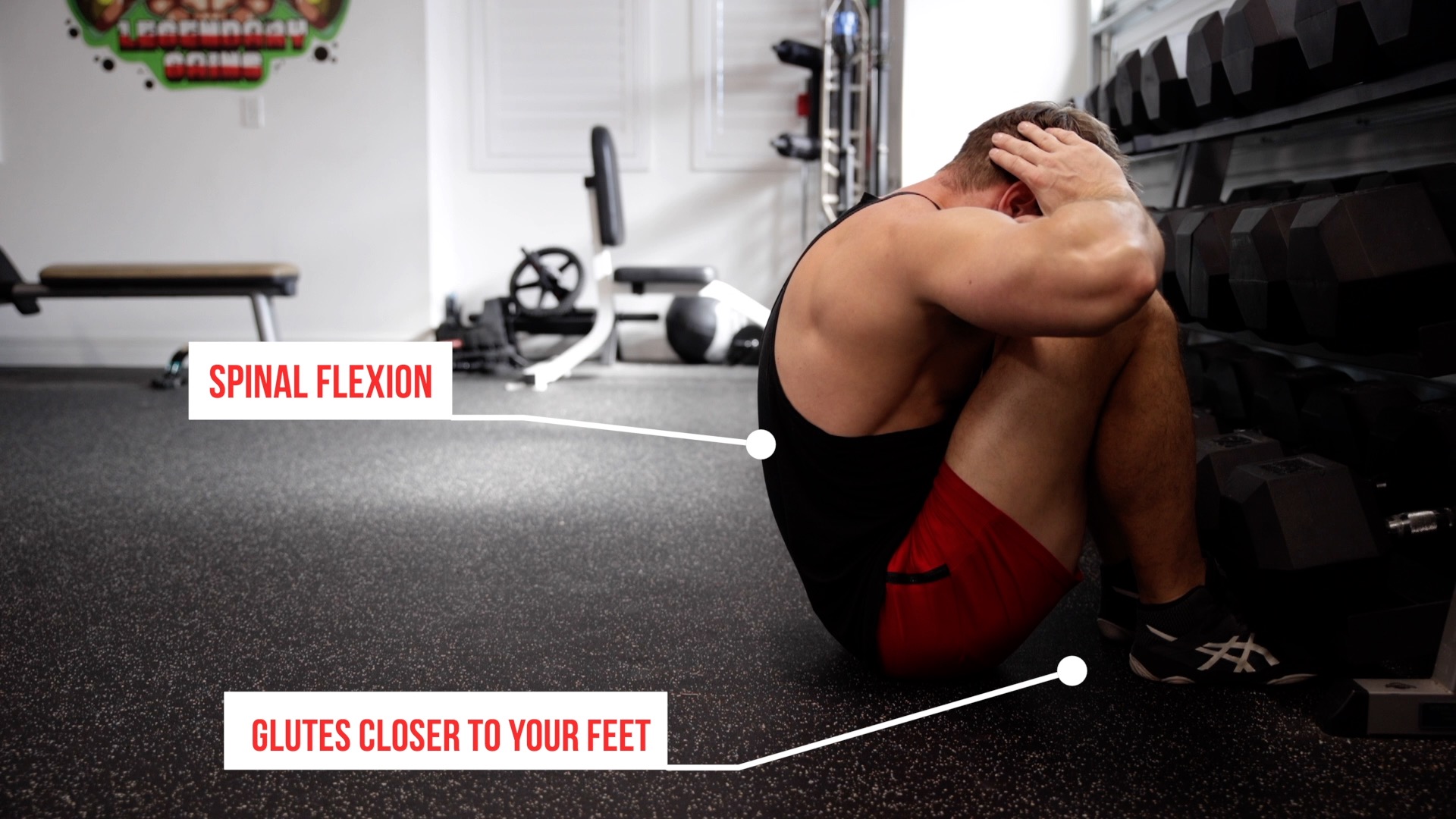
Once in place, what you want to do is start flexing your spine by “sitting up” one vertebrae at a time. The flexion begins at the lower spine near your sacrum and from there, as each vertebrae is flexed, you move up to the lower back and mid back until you end up in the top position with your chest up against your legs and your spine FULLY flexed.

But if you find yourself in the top position and your back is straight, you’re doing it wrong. Remember, we need FULL FLEXION to contract the ABS. So, really make sure when you perform each rep your back is curved at the top of the movement.
Golden Rule #2 – Proper Breathing Is Half The Exercise
You know how with most exercises you’re supposed to take IN a deep breath to brace your core? Well, DON’T do that here! In fact, you need to do the exact opposite and make a mental note of “BREATHING OUT” as your spine is flexing.
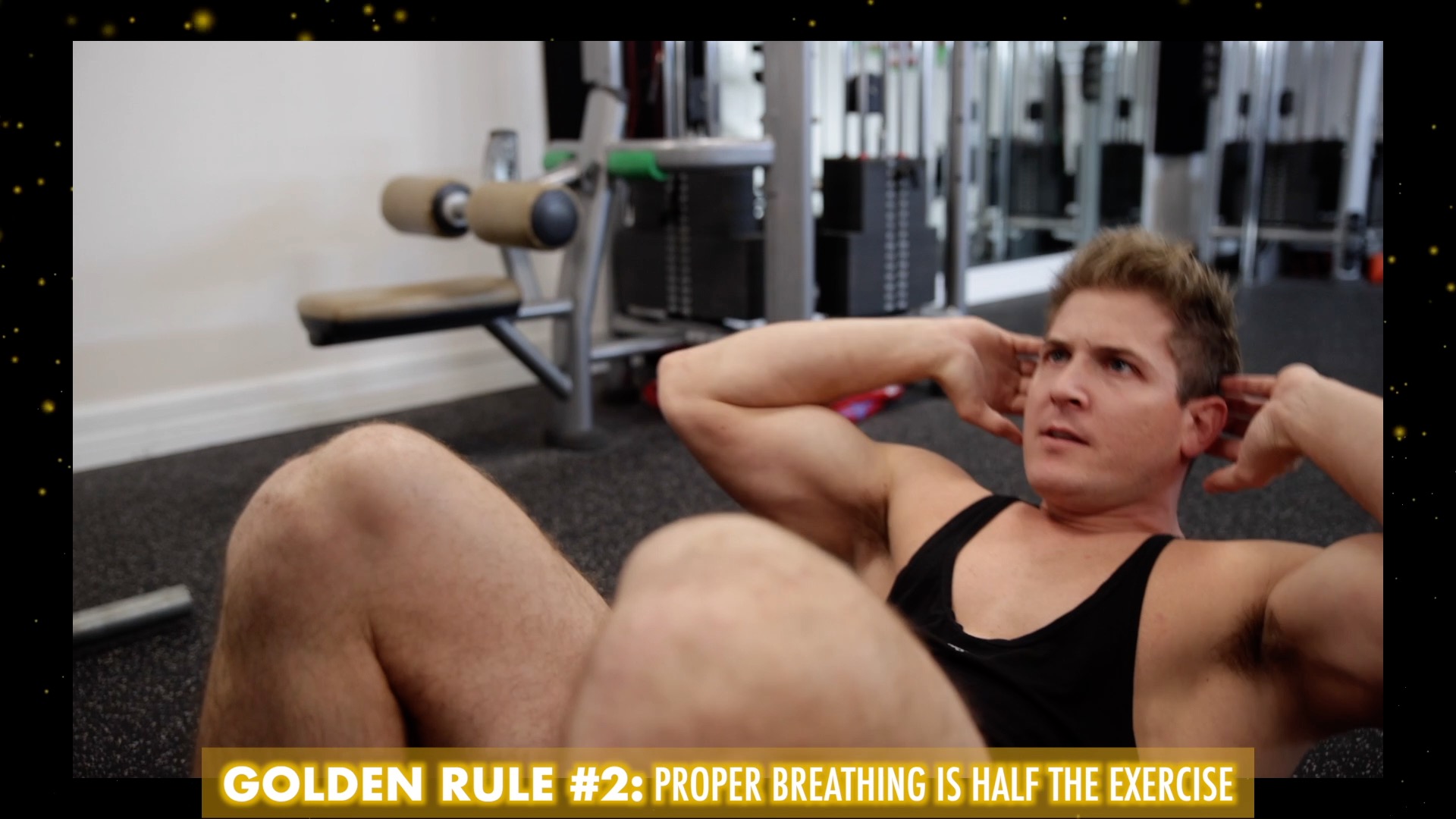
If you don’t, you’re basically creating your own solid road block that’s preventing you from being able to contract your abs as you perform your reps. So, get into the habit of breathing OUT as you sit-up and then taking in your breath in as you go down and extend your spine.

In fact, if after GOLDEN RULE #1 you realized that you were never going into FULL spinal flexion at the top of your reps, this is most likely the reason why.
You were holding in “just enough” of your breath for it to act like a road block not allowing you to fully sit-up during your reps.
Golden Rule #3 – You NEED To Progress With This Movement
I think that because the sit-up is a very simple exercise and you can literally do it anywhere, most people don’t take enough advantage of it. So, if you’ve gotten strong enough that now you can do 30, 40, or even 50 reps in a row there are quite a few very simple ways to increase the intensity.

The first way would be to hold some weight behind your head. 5 – 10lbs is all it takes to intensify the movement enough to keep you in the 12 – 15 rep range per set and make sure you ALWAYS hold the weight behind your head. Doing sit-ups with the weight on your chest isn’t really doing much for you.

That’s why if you hold 25lbs on your chest you can most likely still crank out 20 reps… but as soon as you move that weight behind your head, you start to feel it A LOT more.
Also, you should really think about picking up an AB MAT because it will allow you to FULLY STRETCH out your abs during the bottom portion of the movement which in turn will amplify the amount of tension places on your abs during your reps.
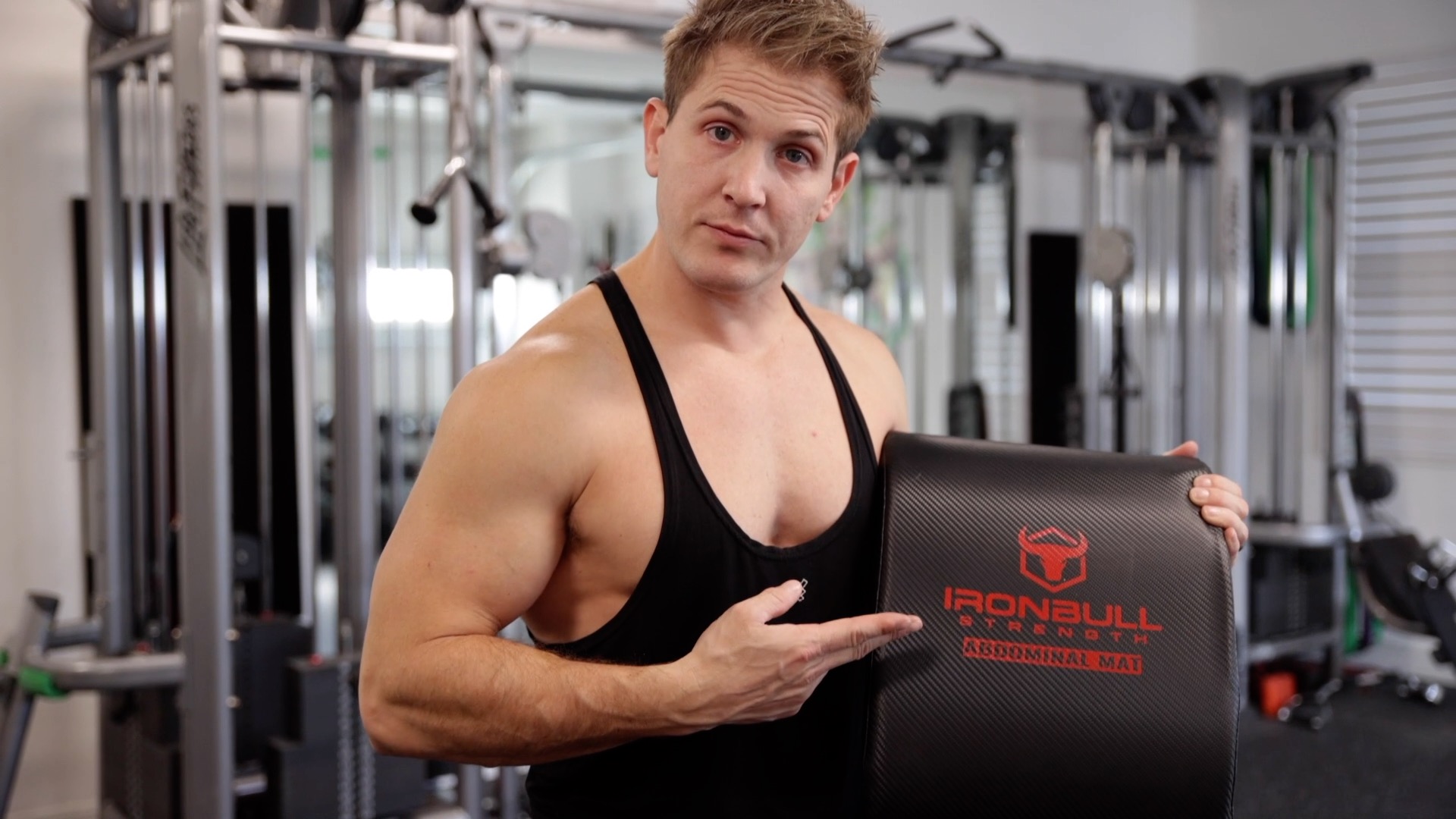
Then, you combine that with holding some weight behind your head and it’s game over. Training ABS at home will once again prove to be the most effective method for building a solid six-pack and you might even get creative and start incorporating some twisting variations as you get stronger.


There’s the traditional one side at a time twist as you come up alternating sides between reps, or the good old sit-up with a double twist at the top bringing your elbows side-to-side as far as you can before returning back to the starting position. I’d say give both variations a shot as they are great for incorporation a bit of obliques in your ABS training.






